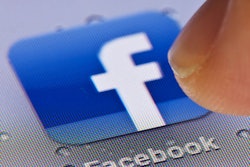
Social media tools such as Facebook and Twitter have revolutionized how people communicate with each other -- and how organizations reach consumers. So is radiology utilizing these tools as it seeks to reinvent itself from a volume-based field to a value-based one?
Sort of, according to a study published online in the Journal of the American College of Radiology: Private radiology groups are jumping in, while academic departments have tended to be slower on the uptake. Why? Perhaps because private groups function in more competitive environments, wrote lead author Dr. McKinley Glover, of Massachusetts General Hospital, and colleagues.
 Dr. McKinley Glover from Massachusetts General Hospital.
Dr. McKinley Glover from Massachusetts General Hospital."Competitive forces are known to be a major influence on business strategy," the team wrote. "Further, greater hospital market competition has been shown to be strongly associated with early adoption of novel technology."
Social media use in healthcare has lagged behind other industries. But its use is growing, shifting from basic information-sharing to tracking healthcare quality and safety, disaster preparedness, and even pandemics, according to Glover's group. And with the advent of the Affordable Care Act, social media offers patients ways to learn more about healthcare providers and care facilities.
"Many patients don't know what radiologists do," Glover told AuntMinnie.com. "They don't understand that we're medical doctors with a minimum of five years of residency training, and that we play a critical part in diagnosing disease, working with referring physicians, and monitoring treatment response."
Using social media ties in well with the field's increasing emphasis on coming out of the reading room and having radiologists take their place as leaders in the patient care continuum, Glover said.
"The American College of Radiology has its Imaging 3.0 initiative, and the whole idea is to help radiologists shift from volume-based service to value-based practice and to promote patient-centered radiology, appropriate imaging, and good communication with referring physicians," he said. "Using social media can help with all of this."
Media bandwagon
Glover and colleagues assessed the 50 largest U.S. private radiology groups and the 50 academic radiology departments with the highest level of funding from the National Institutes of Health for radiology-specific social media use on Facebook, Twitter, Instagram, Pinterest, YouTube, and LinkedIn (JACR, February 21, 2015).
They found that private practices jumped on the social media bandwagon sooner than academic departments, establishing Facebook pages 12 months earlier and Twitter accounts 18 months earlier than academic departments. Seventy-six percent of private radiology practices maintained at least one account on the social media sites included in the study, compared with 28% of academic groups; Facebook was the most common social media tool used.
| Use of social media tools | ||
| Type | Private practices | Academic departments |
| 66% | 18% | |
| 56% | 0% | |
| 42% | 24% | |
| YouTube | 20% | 6% |
| 4% | 0% | |
| 2% | 0% | |
The fact of academic radiology departments' relative lack of social media use was surprising, Glover said.
"When we started looking into it more, we hypothesized that this lack of use may be related to institutional policies that make it difficult for individual academic departments to have the leeway to develop their own social media use," he told AuntMinnie.com.
In any case, using social media in the healthcare sphere comes with its own particular concerns, including controlling the flow of information, patient privacy, and respect for provider-patient relationships, Glover and colleagues wrote. But these concerns shouldn't prevent radiologists from developing a social media strategy.
"A radiology-specific social media presence will become increasingly important within the landscape of efforts to improve patient engagement in an increasingly patient-centered and competitive healthcare environment," the team concluded.




















